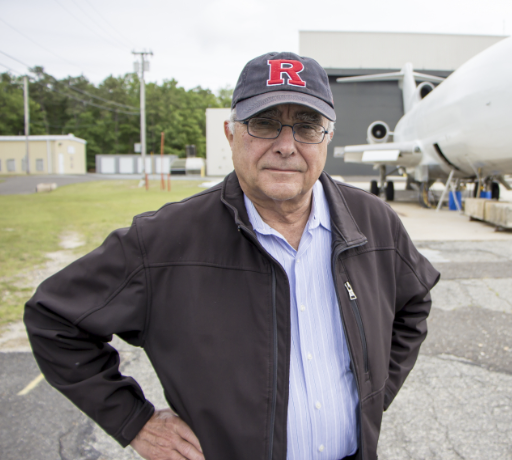Air travelers around the world are alive today because of the fire-safety innovations of Rutgers alumnus Constantine Sarkos.
People like the 100 passengers and five crew members who had time to escape when a Continental 737 veered off the runway in Denver into a ravine and erupted into flames in 2008.
Or the passengers traveling in 2013 from Seoul, South Korea, on Asiana Airlines Flight 214, which crash-landed at San Francisco, smashed into pieces and caught fire. Three people died from injuries unrelated to the fire, while 304 survived.
Sarkos, manager of the Federal Aviation Administration’s Fire Safety Branch, heads up a research and development team of engineers, chemists, technical experts and computer scientists at the William J. Hughes Technical Center, 10 miles west of Atlantic City in Egg Harbor Township – the most extensive aviation fire safety research facility in the world.
“Gus does the science that becomes the fire-safety standards adopted by the whole world,” says Dennis Filler, director of the FAA’s Hughes Technical Center. “His efforts have provided added time for passengers to evacuate. In the old days, materials would have burned faster or caused passengers to inhale toxic fumes, and they would have died in the aircraft.”
The seat cushion you sit on while flying is 30 percent more fire resistant than earlier models because of Sarkos and his team. But the changes also involve cargo and cabin safety improvements that travelers cannot see – or feel – during a flight. His team’s painstaking work at the FAA Technical Center testing materials and evaluating fire detection and suppression systems has prompted more than a dozen significant changes to U.S. and foreign aircraft.
